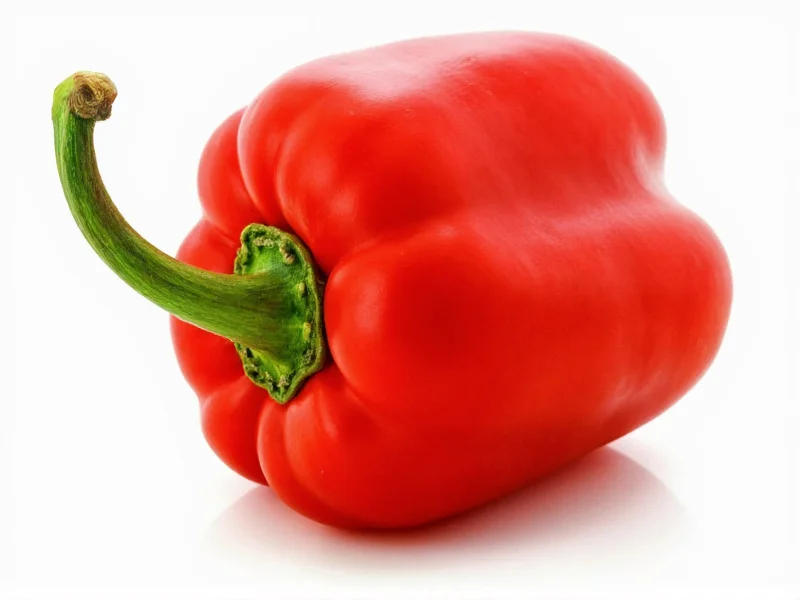Understanding Ghost Pepper Heat Levels
When exploring how many scoville units in a ghost pepper, it's essential to understand what these numbers mean in practical terms. The ghost pepper, scientifically known as Capsicum chinense 'Bhut Jolokia', earned recognition as one of the hottest peppers globally when it entered Guinness World Records in 2007.
The Scoville scale measures chili pepper pungency (spiciness or heat) by determining capsaicin concentration. Developed by pharmacist Wilbur Scoville in 1912, this scale remains the standard measurement for pepper heat today. Modern testing uses high-performance liquid chromatography (HPLC) for precise capsaicin measurement, then converts these readings to Scoville units.
Ghost Pepper Scoville Rating Explained
Ghost peppers consistently test between 855,000 and 1,041,427 Scoville Heat Units. This extraordinary heat level means:
- A single ghost pepper contains enough capsaicin to significantly affect an entire dish
- They're approximately 200-400 times hotter than a typical jalapeño
- The heat registers on your tongue within seconds and can last for 20-45 minutes
- Handling requires protective gloves to prevent skin irritation
| Pepper Variety | Scoville Heat Units (SHU) | Heat Comparison |
|---|---|---|
| Ghost Pepper (Bhut Jolokia) | 855,000 - 1,041,427 | Reference point |
| Habanero | 100,000 - 350,000 | 2-8x milder than ghost pepper |
| Cayenne | 30,000 - 50,000 | 17-35x milder than ghost pepper |
| Jalapeño | 2,500 - 8,000 | 100-400x milder than ghost pepper |
| Bell Pepper | 0 | No heat |
Factors Affecting Ghost Pepper Heat Levels
Several elements influence the precise Scoville rating of any given ghost pepper:
- Growing conditions: Soil composition, climate, and water stress can increase capsaicin production
- Plant maturity: Fully ripe peppers typically reach maximum heat levels
- Genetic variation: Different ghost pepper strains show natural heat variations
- Measurement method: Laboratory testing produces more consistent results than human taste panels
Researchers at New Mexico State University's Chile Pepper Institute found that ghost peppers grown in their test gardens consistently measured around 1,000,000 SHU, confirming their extreme heat level. This research represents one of the most reliable ghost pepper scoville unit measurements available to consumers.
Practical Implications of Ghost Pepper Heat
Understanding how hot is a ghost pepper compared to habanero helps cooks use these peppers safely and effectively. The significant heat difference means:
- Ghost peppers require careful handling with gloves to prevent skin and eye irritation
- Cooking with ghost peppers demands precise measurement—often just a small piece suffices
- Consuming ghost peppers without preparation can cause severe discomfort
- They're commonly used in hot sauces, specialty dishes, and even non-culinary applications like animal repellents
Food scientists note that capsaicin—the compound responsible for heat—binds to pain receptors in the mouth and throat. The extreme concentration in ghost peppers triggers intense reactions that can include sweating, flushing, and temporary numbness.
Safety Considerations When Handling Ghost Peppers
Due to their exceptional heat level, proper safety precautions are essential:
- Always wear nitrile gloves when handling ghost peppers
- Avoid touching your face, especially eyes, during preparation
- Work in well-ventilated areas to prevent inhaling capsaicin particles
- Have dairy products (milk, yogurt) available to counteract heat if consumed
- Never use plastic bags for storage—capsaicin can permeate plastic
Emergency medical technicians report increased cases of pepper-related discomfort during harvest seasons, particularly among inexperienced gardeners attempting to grow ghost pepper heat level facts for the first time.
Ghost Peppers in Culinary Applications
Chefs who work with ghost peppers emphasize that less is more. Professional kitchens typically use ghost peppers in these ways:
- Infusing oils or vinegars rather than adding whole peppers
- Using tiny amounts in sauces where heat distributes evenly
- Removing seeds and membranes, which contain the highest capsaicin concentrations
- Pairing with cooling ingredients like coconut milk or dairy to balance heat
The growing popularity of extreme heat challenges has brought ghost peppers into mainstream awareness, though culinary experts caution against treating these peppers as novelty items due to their genuine physiological effects.
Conclusion: Understanding Ghost Pepper Heat
The ghost pepper's Scoville rating of 855,000-1,041,427 SHU places it in the upper echelon of hot peppers. This measurement provides valuable context for anyone exploring how many scoville units in a ghost pepper contains. Understanding these heat levels helps consumers make informed decisions about handling, cooking with, and consuming these exceptionally hot chilies safely.
Frequently Asked Questions
How does the ghost pepper compare to the Carolina Reaper?
The Carolina Reaper surpasses the ghost pepper in heat, measuring 1,400,000-2,200,000 Scoville units compared to the ghost pepper's 855,000-1,041,427 SHU. The Reaper is approximately 1.5-2 times hotter than the ghost pepper.
Can you build tolerance to ghost peppers over time?
Yes, regular consumption of capsaicin-containing peppers can build temporary tolerance as nerve receptors become desensitized. However, this tolerance resets after several days without exposure, and pushing tolerance too quickly can cause digestive issues.
What's the safest way to handle ghost peppers in the kitchen?
Always wear nitrile gloves, work in a ventilated area, avoid touching your face, and wash all surfaces thoroughly after preparation. Consider using specialized ghost pepper handling tools rather than bare hands, even with gloves.
How much ghost pepper equals one habanero in recipes?
Due to the ghost pepper being approximately 3-5 times hotter than a habanero, you would need only 1/3 to 1/5 the amount of ghost pepper to achieve similar heat levels. Start with tiny amounts and adjust carefully.
Why do Scoville ratings for ghost peppers vary so much?
Natural variations in growing conditions, plant genetics, ripeness, and testing methods all contribute to the range in Scoville ratings. Even peppers from the same plant can show significant heat differences based on their position on the plant and exposure to environmental stressors.











 浙公网安备
33010002000092号
浙公网安备
33010002000092号 浙B2-20120091-4
浙B2-20120091-4